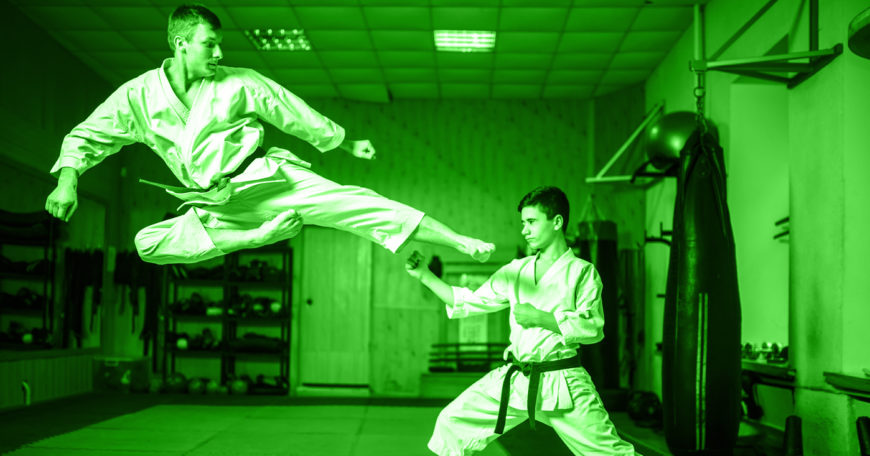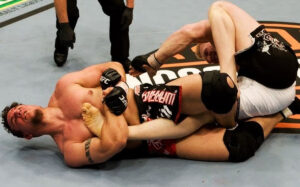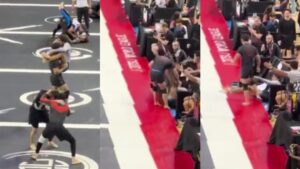The martial arts belting system can be traced back to Kano Jigoro, the founder of Judo. The belts, or obi as they were known in Japan, were much thicker back then, and only consisted of two colors: black and white. It was his student, Mitsuyo (later Otavio) Maeda, that traveled to Brazil in 1914 and played a fundamental role in what is now modern Brazilian Jiu-Jitsu. The judoka trained Carlos Gracie as a teen, not only teaching him the sport, but also his philosophies surrounding the nature of combat, which was later vastly significant to the crafting of Gracie Jiu-Jitsu, the modern system we know today.

The addition of other colors to the belting system cannot be completely traced successfully, but the first official belting system was adopted by the Jiu-Jitsu Federation of Guanabara in 1967. The current system and criteria were created and upheld mainly by the Sport Jiu-Jitsu International Federation (SJJIF) and International Brazilian Jiu-Jitsu Federation (IBJJF). This system differs from Judo in that there is a separate ranking system for children 15 and under, and there is also the addition of stripes and degrees in BJJ.
For adults, there are white, blue, purple, brown, black, coral, and red belts (with stripes and degrees beginning at black). However, this can sometimes vary as some schools do add the youth colors (yellow, orange, and green) into adult belting, but regardless of this, it is at the purple belt level that one is considered an intermediate level grappler. To receive a purple belt, the student is required to be at least 16 years old (adult), have been a blue belt for at least two years, in general, and is considered knowledgeable enough to coach lower-ranked students.
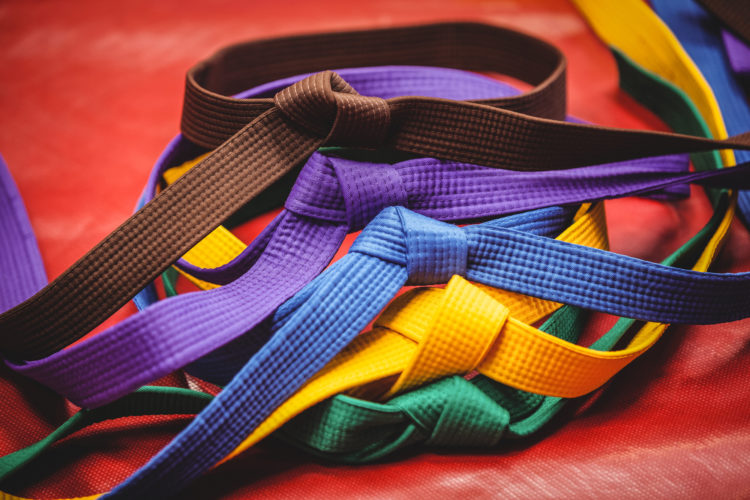
The journey from a white to a blue belt is pretty uncomplicated, and progression seems relatively in reach. Attend class, learn a new technique, drill it, and finally, spar to put it to the test. A long as you practice this formula consistently, you will progress easily. However, many students find issues as they try to transition from blue to purple, this is where they feel stagnant and for some, incompetent.
The middle belts are notoriously awkward and challenging for many reasons. One potential explanation for this is that at the blue belt level, the practitioner knows most of the techniques they need to be a decent grappler, but to progress beyond that, they must look past overall technique execution, and rather focus on more specific and subtle nuances such as setup, timing, and overall flow. This is really what distinguishes a beginner or general level student from an intermediate.
Obviously what separates the belts is a certain level of experience, but a major difference at this ranking is that there is also a shift in responsibility. Where previously the instructor was in charge of crafting the student, it is now on the student to continue that by refining what he has learned.
1- Timing
Patience is of the essence here. Pressure is not the only way to submit someone and that is one big difference between the belt levels. Yes, as a blue belt you will know how to play the game, but there is usually a lack of a firm strategy.
Stay in a safe position and practice patience when removing grips, rather than just using sheer force. To help with timing, it is also worthwhile to refine what you already know by tightening up gaps between positions, reversals, and submissions.
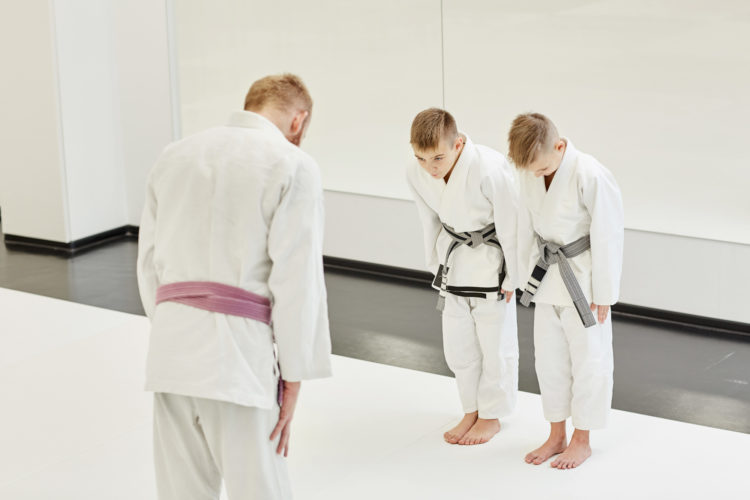
2- Slow Down
Beginners are notoriously enthusiastic. Their inexperience coupled with their lack of fight IQ often causes them to rush in without thinking. By blue belt, this has been weaned out, but they still have a tendency to utilize their techniques quickly.
Try to slow things down, allowing you to relax, and have better clarity and judgment. Most importantly, slowing down allows you to work on having better precision. This may feel too slow initially but it is an important factor in making small but necessary improvements to grip, placement, and pressure.
3- Anticipation
Pay attention to subtle movements your opponent makes, and learn to read them, if possible. This is easiest to learn with a partner you regularly roll with. Everyone has a style and rhythm unique to them, no matter how subtle, and this can be used to anticipate their next move.
Give them openings that will initiate the response you want, then close the gap and exploit their choice. By paying attention to your partner’s subtle changes in movement and pressure you can anticipate their next move, and be prepared with your own.
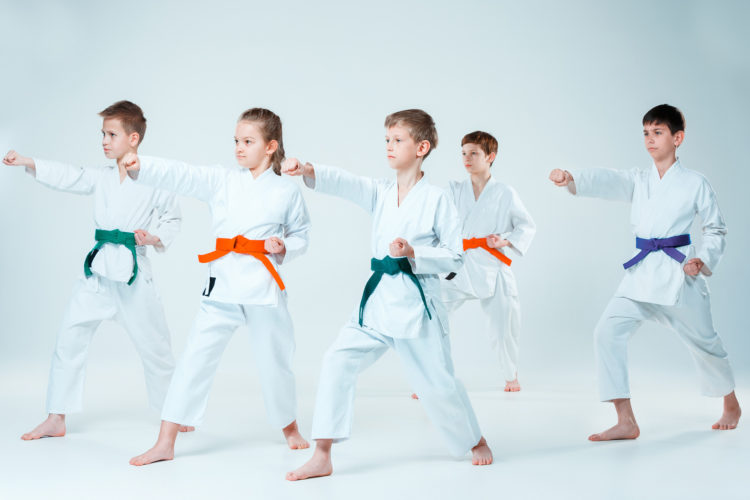
4- Flow
Avoid forcing techniques or positions. Force only gets one so far and this becomes very evident at the blue belt level. A purple belt should be able to comfortably beat anyone on a good day, but this is not done by muscle alone, they must also have a game plan to execute.
This becomes more realistic when the student can chain together positions, seeing the bigger picture and taking note of how one move will connect to another later down the line. Flow allows you to be mentally ahead of your opponent.
5- Personal Style
At the intermediate level, a martial artist begins to branch out from the learned style of his teachers and begins to have the confidence to experiment with personal style. This will be largely based on physical attributes and advantages, such as weight or height, but can be additionally improved by studying the sport in depth. Watching fights and tournaments is one of the best ways to do this. Watching more experienced grapplers and how they deal with different types of competitors can provide a wealth of information to any student.
Also, consider what techniques or positions come more naturally to you specifically, and hone and perfect them to a tee (while still working on your weaknesses). When you grapple, your unique style should set you up for success by setting up positions that work in your best favor and play to your natural abilities.
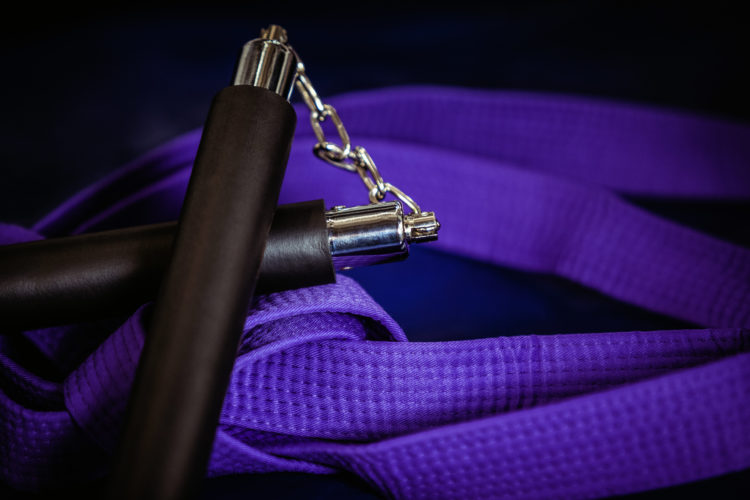
6- Personal Responsibility
To raise the bar from a blue belt to a purple belt, you must start thinking like an experienced fighter, which means having some initiative and personal responsibility in regards to your development. At this stage, the coach may give you less attention in comparison to the beginners, but it is an excellent opportunity to take over some of the responsibility in regards to your practice and future development.
This will be unique to you, but it generally involves taking stock of strengths and weaknesses, self-directed supplemental learning, and having clear targets or outcomes for the class. This can make all the difference in moving up a level.

7- Investment
Investment can mean many things to different people but ties in with personal responsibility and style. This again will be specific to you, but ultimately, nothing beats time on the mat. For some, it may be increasing weekly class frequency or attending lectures and seminars with masters of the sport, or it may be reading, researching, and broadening your knowledge of BJJ and its history.
Expanding your expertise helps to develop an analytic mind and will come in practical use when grappling. Essentially, you get out what you put in. If you are having trouble feeling ready to test for your purple belt, dedicate more time to developing your practice. Investments pay dividends.
Conclusion
The biggest difference between blue and purple belts is the level of maturity and commitment the student brings to the table. Two years is the mandatory minimum it will take, but it can easily take double that if you do not take responsibility for your training. This is the stage where the instructor begins to loosen the reins and it is up to you to take control over your development as an athlete. The approach should be well thought out, measured and goal orientated. It’s also important to study elite level practitioners not only for their insight but also for the motivation and inspiration that you will need along the way.
Everything at this stage will be about refinement, constantly seeking improvement in even the smallest of areas, it is a sport of increments. We all learn early on that repetition is the mother of skill, now it is time to put that into practice.

